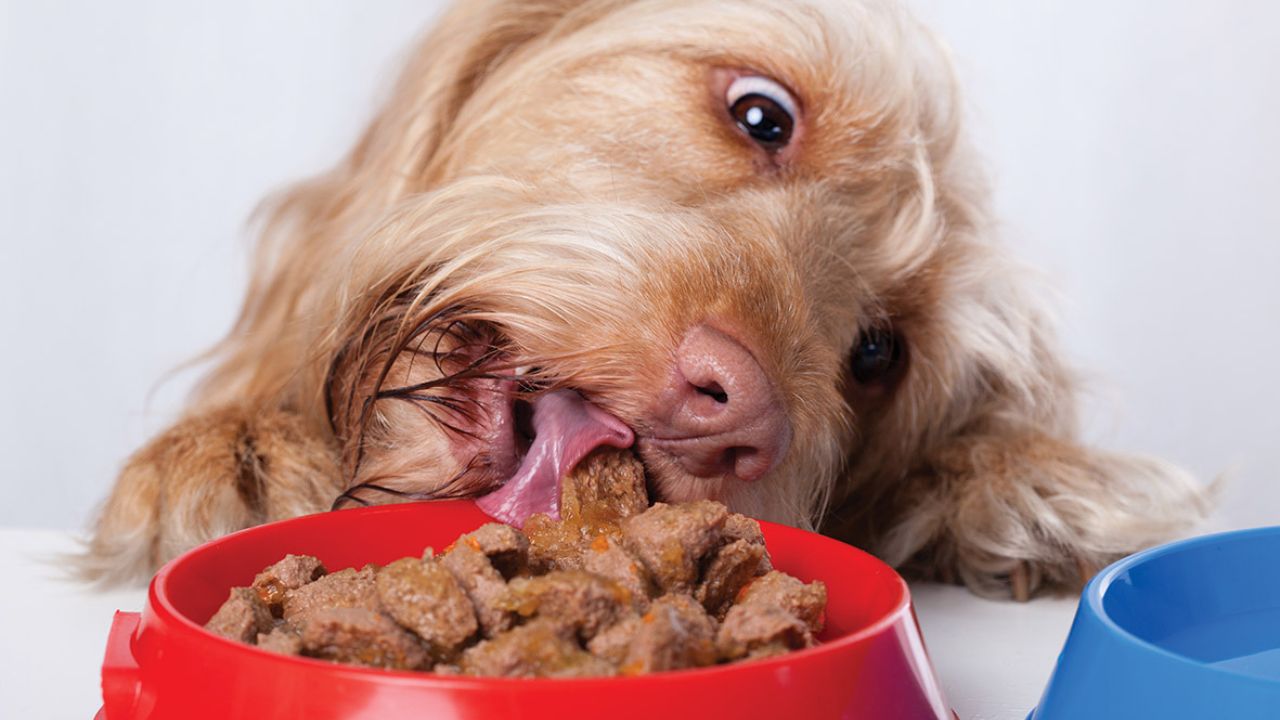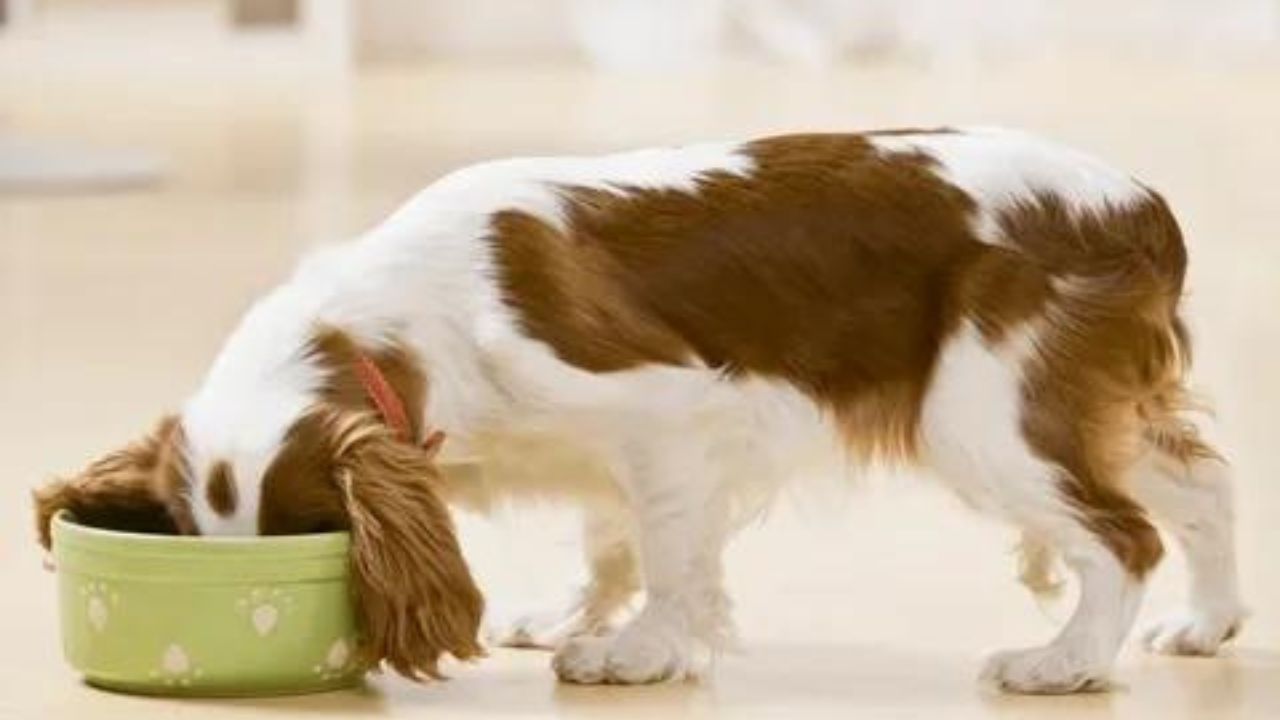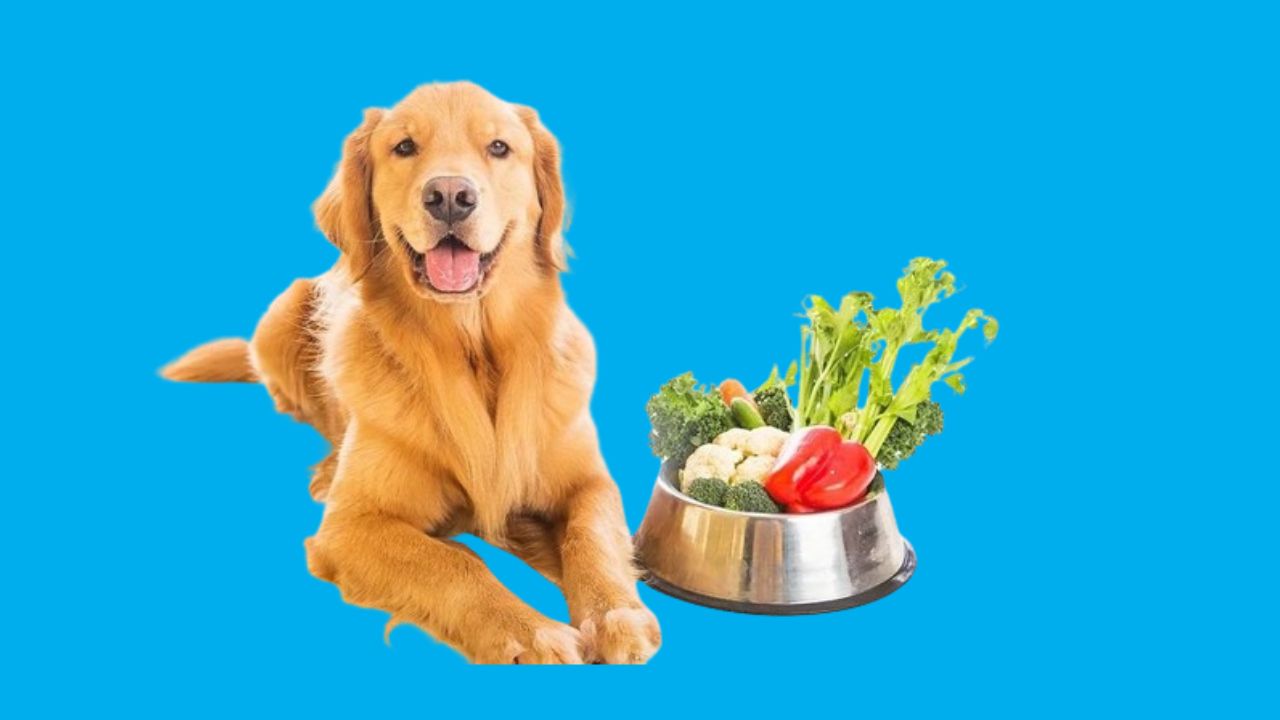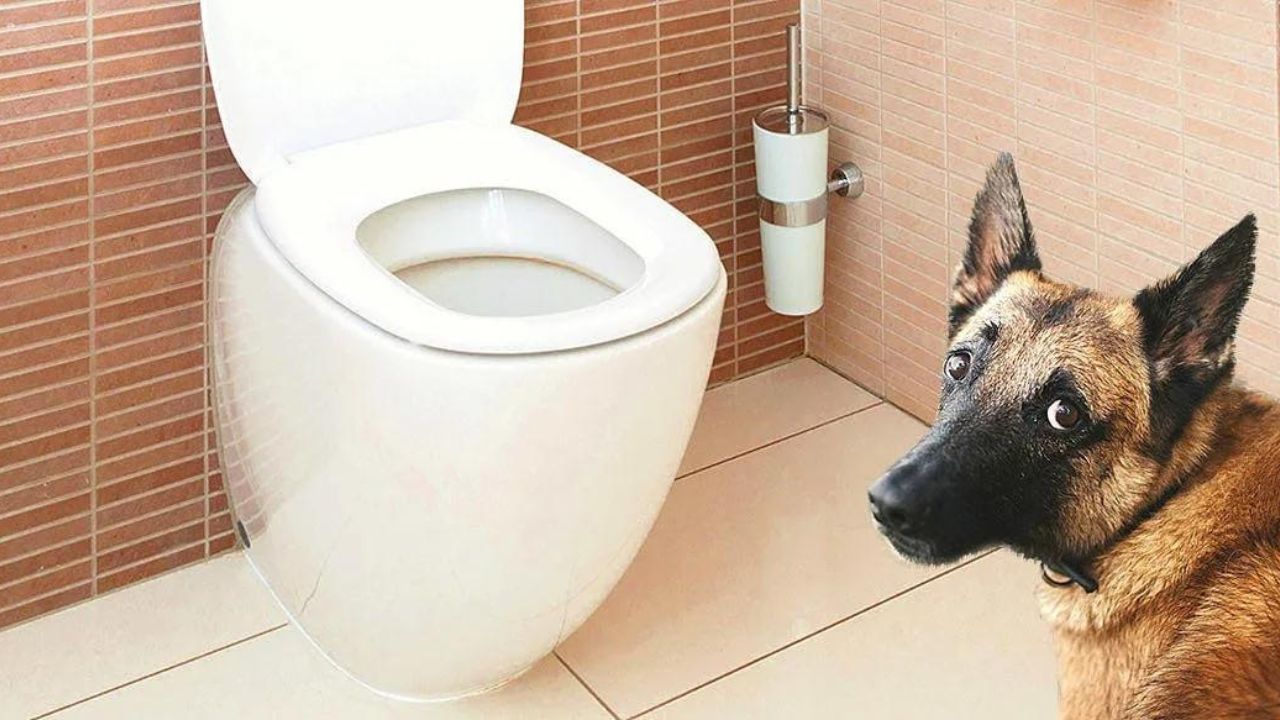
Welcome to our latest blog post about the ideal time for puppies to eat dry food. For all parents out there being aware of when your puppy is ready to switch from wet food to dry food and recognizing key features of high quality puppy food is crucial. In this post we’ll share insights on puppy nutrition the advantages of feeding puppies dry food and suggestions for smoothly transitioning your furry companion to a dry diet.
We’ll also cover factors like the age at which this transition is appropriate signs that indicate readiness and effective methods for introducing and feeding your puppy dry food. When you finish reading this post, you’ll understand when it’s best to introduce dry food into your pup’s diet and how to ensure they get the nutrients they need for healthy growth and development.
Understanding Puppy Nutrition
Before we discuss when puppies can eat completely dry food, it’s important to understand their basic nutrition requirements. Puppies have unique nutrient requirements that differ from adult dogs, as they are in rapid growth and development.
Here Are Some Key Nutrients That Puppies Need To Support Their Growth
- Protein – Puppies require more protein than adult dogs to support their muscle and tissue development.
- Fat – Fat is a vital energy source for puppies and helps support the development of their nervous system.
- Calcium and Phosphorus are important for developing strong bones and teeth.
- Vitamins – Puppies need a variety of vitamins, such as A, D, E, and B-complex vitamins, to support their overall health and development.
When looking for quality puppy food, it’s important to look for products that contain these essential nutrients in appropriate amounts. Please consult your veterinarian to determine the best feeding plan for your puppy and ensure that they receive adequate nutrition to support its growth and development.
Wet Food vs Dry Food
When it comes to feeding your puppy, there are two main types of food: wet and dry. Both wet and dry foods have pros and cons, and the choice ultimately comes down to personal preference and what works best for your puppy’s needs.
Here are some pros and cons of wet and dry puppy food:
Wet Food:
Pros:
- Higher moisture content, which can help keep your puppy hydrated
- More flavorful and appealing to some puppies
- It can be easier to digest for puppies with sensitive stomachs
Cons:
- Spoils faster than dry food
- It can be more expensive than dry food
- It can contribute to dental problems if not supplemented with dry food or dental chews
Dry Food:
Pros:
- More convenient and easy to store than wet food
- Can help promote dental health by cleaning teeth and gums as puppies chew
- Generally less expensive than wet food
Cons:
- Lower moisture content, which can lead to dehydration if your puppy doesn’t drink enough water
- It may be less appealing to picky eaters
- It can be harder to digest for puppies with sensitive stomachs
Choosing high-quality food that meets your puppy’s nutritional needs is important, whether wet or dry. Consult your veterinarian for guidance on which type of food may be best for your puppy.
When To Introduce Dry Food To Puppies
The timing of when to introduce dry food to puppies is an important consideration. Puppies are typically weaned off their mother’s milk around 4-6 weeks of age and are then gradually introduced to solid food. However, it’s important to note that puppies have different nutritional requirements than adult dogs, and their digestive systems are not fully developed.
Here Are Some Age Considerations For Introducing Dry Food To Puppies:
6-8 weeks: Puppies can start to nibble on solid food, but their main source of nutrition should still come from their mother’s milk or a high-quality puppy formula.
8-10 weeks: Puppies can start eating solid food more regularly, but choosing high-quality puppy food specifically formulated for their nutritional needs is essential.
10-12 weeks: By this age, most puppies can eat dry food exclusively, but monitoring their weight and overall health is important to ensure they get the right amount of nutrients.
When introducing dry food to your puppy, begin by combining a little dry food with their current wet food and gradually increasing the ratio of dry food over time. This gradual transition will help your puppy adjust to the new food and reduce the risk of digestive upset.
It’s important to consult your veterinarian for guidance on when to introduce dry food to your puppy, as individual puppies may have unique nutritional needs and developmental stages.
Benefits Of Feeding Puppies Dry Food
There are several benefits to feeding puppies dry food, including:
Promotes dental health: Dry food can help promote dental health by mechanically cleaning your puppy’s teeth and gums as they chew. This can help reduce the risk of tooth decay and gum disease, two examples of dental issues.
Convenient and easy to store: Dry food is more convenient and easier to store than wet food, as it doesn’t require refrigeration or special storage conditions.
Dry food is generally less expensive than wet food, which can be helpful for pet owners on a budget.
Easy to portion control: Dry food can be easily portioned out and measured, which can help ensure your puppy gets the right amount of food and prevent overfeeding.
Longer shelf life: Dry food has a longer shelf life than wet food, so you can buy larger bags and store them for longer periods without worrying about spoilage.
Lower moisture content: Dry food has a lower moisture content than wet food, making it easier to manage your puppy’s water intake and prevent dehydration.
Not all dry foods are created equal, and choosing high-quality puppy food that meets your puppy’s unique nutritional needs is essential. Consult your veterinarian for guidance on choosing the right food for your puppy.
Feeding Tips For Puppies On Dry Food
Here are some feeding tips to keep in mind when feeding your puppy dry food:
Choose high-quality puppy food: Look for food specifically formulated for your puppy’s nutritional needs. Please read the label carefully to ensure it contains the appropriate protein, fat, carbohydrates, vitamins, and minerals balance.
Measure out portions: Use a measuring cup to portion your puppy’s food to ensure it gets the appropriate amount for age, weight, and activity level. Overfeeding can lead to obesity, negatively impacting your puppy’s health.
Feed on a regular schedule: Establish and stick to a regular feeding schedule. Puppies typically require three to four small meals daily until they are about six months old. After six months, you can switch to two meals per day.
Provide plenty of fresh water: Make sure your puppy has access to plenty of fresh water at all times. This is particularly important when feeding dry food, as it has a lower moisture content than wet food.
Monitor your puppy’s weight: Weigh them regularly to ensure they grow healthy. Adjust their portion sizes accordingly if your puppy is gaining weight too quickly or slowly.
Avoid feeding table scraps: Resist the temptation to feed your puppy table scraps, as these can be high in fat and calories and can upset their stomach.
Transition slowly: If you are switching your puppy to a new dry food, gradually over several days to minimize the risk of digestive upset.
Following these feeding tips can help ensure your puppy gets the nutrition they need to support its growth and development.
What Is The Best Way To Soak Dry Food For Puppies?
If you prefer to soak your puppy’s dry food before feeding, here’s the best way to do it:
- Start by measuring your puppy’s appropriate amount of dry food based on age, weight, and activity level.
- Place the dry food in a bowl and add warm water to it. The water should be at a temperature that is comfortable to the touch but not too hot.
- Allow the food to soak for 10-15 minutes or until the kibble has softened and expanded. Add some wet food or broth to the mix for flavor and moisture.
- Stir the mixture to ensure the food is evenly coated with the water.
- Before feeding, check the food’s temperature. To your puppy to ensure it’s not too hot.
- Feed the soaked food to your puppy, and discard any uneaten portions after 20-30 minutes to prevent spoilage.
It’s important to note that soaking dry food is only sometimes necessary, and some puppies may prefer their food dry. Please consult your veterinarian to determine the best feeding practices for your puppy based on its nutritional needs and preferences.
Conclusion
Feeding your puppy a balanced and nutritious diet is essential for their health and well-being. When introducing dry food to puppies, it’s important to do so gradually and choose a high-quality food that meets their nutritional needs. Dry food can offer several benefits for puppies, including promoting dental health, convenience, and affordability.
However, monitoring your puppy’s weight and adjusting its portion sizes is important to prevent overfeeding. Consult with your veterinarian for guidance on the best feeding practices for your puppy, and remember to provide plenty of fresh water and avoid feeding table scraps. Proper feeding and care can help your puppy grow healthy and happy.
FAQ
What Do You Feed A 1-Month-Old Puppy?
During a puppy’s first month, the ideal nutrition is found in its mother’s milk, which offers the ideal blend of essential nutrients for healthy growth. However, if the mother isn’t available or supplementation is necessary, opt for a specialized formula tailored to the puppy’s needs.
Can I Mix Two Dry Dog Foods?
Is it advisable to blend two distinct types of dry dog food? While it’s generally considered safe, it’s not the optimal approach. However, if you mix two varieties, ensure they are formulated for the same stage of life and breed size. This step helps maintain balanced nutrition for your pet.
When Can Puppies Eat Dry Food Without Water ?
If you’ve just adopted a puppy into your family, giving your new addition the right kind of food it needs to grow into a happy, healthy dog is important. Depending on your puppy’s age, you may need to undergo the weaning process before transitioning to dry kibble; this usually occurs around four weeks old.
How Much Water Should You Add To Dry Dog Food?
Add approximately 1/4 cup of filtered water to the dry kibble in the bowl to improve your pet’s food’s texture and flavor.
When puppies can start eating solid dry food, typically around 6 weeks of age. Even though they may be able to handle solid food at this stage, many owners still opt to moisten it, especially since puppies who have just developed their teeth may find softer food more palatable and easier to eat.
When Can Puppies Eat Dry Food?
Your puppy should start transitioning to solid foods around 6 weeks of age. While many owners opt to soak their food during this period, it can be beneficial, especially for puppies who have just developed their teeth, as they may find the softened texture more palatable and easier to eat.






